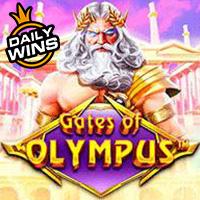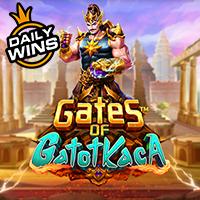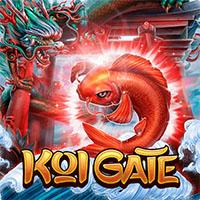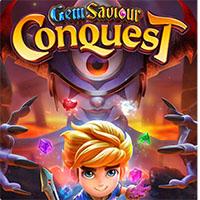

















Building upon the foundation established in Unlocking Space Adventures Through Game Features, it becomes evident that narrative is not merely an additive element in space game design but a core component that deeply influences player engagement and immersion. As the genre has evolved, storytelling has transitioned from simple lore snippets to intricate, player-driven narratives that shape the entire gaming experience. This article delves into how compelling stories underpin the design of space games, enriching features and fostering a sense of discovery that keeps players invested for hours on end.
Contents
- The Evolution of Storytelling in Space Games
- Building a Cohesive Universe: Worldbuilding Through Narrative
- Character Development and Player Agency in Space Narratives
- Environmental Storytelling: Using Space Environments as Narrative Devices
- Integrating Player-Generated Stories into Space Game Design
- The Role of Narrative in Game Mechanics and Features
- Challenges and Ethical Considerations in Space Storytelling
- The Future of Storytelling in Space Game Design
- Conclusion: Bridging Narrative and Game Features to Unlock Space Adventures
The Evolution of Storytelling in Space Games
Historically, space games began with straightforward, linear plots that served as backdrops for gameplay activities. Classic titles like Galactic Empire and Star Control provided lore and world context but lacked dynamic storytelling mechanics. However, recent innovations have shifted this paradigm, emphasizing player agency and emergent narratives. Games such as No Man’s Sky and Elite Dangerous exemplify this transition, offering vast open universes where player choices influence story outcomes and universe evolution.
Incorporating advanced storytelling techniques—like branching dialogues, real-time event generation, and procedural narrative creation—has allowed developers to craft experiences where stories are not pre-scripted but evolve in tandem with player actions. This shift from passive background lore to active narrative mechanics enhances immersion, making each player’s journey unique and personal.
Building a Cohesive Universe: Worldbuilding Through Narrative
Effective storytelling in space games begins with robust worldbuilding. Narrative shapes the universe, creating a tapestry of civilizations, histories, and conflicts that serve as a canvas for gameplay. For example, Star Citizen meticulously details its galactic factions, each with distinct origins and motives, which informs missions and player interactions.
Believable lore fosters a sense of authenticity and depth, motivating players to explore further. When players understand the historical tensions or cultural diversity of a civilization, they become more invested in their actions within the universe. This interconnected storytelling enhances immersion, turning a game environment into a living, breathing universe.
“Worldbuilding is the bridge that transforms a mere space setting into a compelling universe that players want to inhabit.”
Character Development and Player Agency in Space Narratives
Characters—both player-controlled and NPCs—are central to narrative engagement. Designing memorable protagonists with clear motivations encourages emotional investment. For instance, in Mass Effect: Andromeda, player choices impact relationships and story arcs, fostering a sense of ownership over the narrative.
Player agency is further amplified through decision-making mechanics that lead to multiple outcomes. Games like Star Wars: Knights of the Old Republic demonstrate how dialogue choices can alter alliances, story directions, and even the game’s ending. Balancing narrative complexity with seamless gameplay ensures that players experience meaningful consequences without feeling overwhelmed.
Environmental Storytelling: Using Space Environments as Narrative Devices
Visual cues and environmental details serve as powerful storytelling tools. Abandoned space stations, wreckage fields, and alien ruins tell stories without explicit narration. For example, in Prey (2017), the derelict ship interiors and scattered debris evoke a history of disaster and conflict, immersing players in a narrative world.
Sound design and visual effects further reinforce these stories. Eerie ambient sounds, flickering lights, and environmental hazards can suggest ongoing danger or past events, deepening the player’s understanding of the universe’s lore. Thoughtful environmental storytelling transforms static scenery into an active narrative element.
Integrating Player-Generated Stories into Space Game Design
Mechanics that facilitate player storytelling—such as in-game journals, shared missions, and custom mission editors—encourage community involvement. Titles like Minecraft and Starbound exemplify how players craft and share their narratives, extending a game’s lifespan and fostering a vibrant community.
However, maintaining narrative coherence amidst diverse user-generated content presents challenges. Developers often implement moderation tools, procedural storytelling algorithms, and narrative templates to ensure that player stories complement the game’s universe and uphold story quality.
The Role of Narrative in Game Mechanics and Features
Storytelling influences core gameplay elements such as missions, quests, and challenges. Narrative-driven quests—like uncovering lost civilizations or negotiating intergalactic treaties—provide context and emotional weight, increasing player engagement. For example, in Elite Dangerous, the evolving narrative impacts the availability of missions and the political landscape, making the universe feel dynamic and alive.
Moreover, developers often introduce new features organically through story arcs, ensuring that gameplay updates feel natural and immersive. Emotional storytelling—highlighted in titles like Fallen Earth—creates a memorable experience that resonates beyond gameplay mechanics alone.
Challenges and Ethical Considerations in Space Storytelling
Balancing realism with imaginative storytelling is crucial. While scientific accuracy enhances credibility, overly technical narratives risk alienating players seeking escapism. Developers must strike a balance, as seen in Star Trek: Bridge Crew, which combines plausible science with engaging stories.
Addressing cultural sensitivities and diversity within narratives ensures inclusivity and prevents stereotypes. The rise of multicultural narratives in titles like Space Pirates and Zombies 2 highlights the importance of representing diverse perspectives.
Avoiding clichés requires originality and fresh storytelling approaches. Innovative narratives—such as non-linear storytelling or player-authored lore—help maintain engagement and foster creativity in game design.
The Future of Storytelling in Space Game Design
Emerging technologies like virtual reality (VR) and artificial intelligence (AI) promise to revolutionize space storytelling. VR offers immersive worlds where players can experience narratives firsthand, while AI enables adaptive storytelling tailored to individual player choices. For instance, projects utilizing AI-driven narrative engines, such as Inkle Studios’ Reigns, demonstrate potential for personalized stories within space settings.
The integration of these technologies could lead to highly personalized and dynamic narratives, unlocking deeper space adventure experiences. As storytelling becomes more sophisticated, the emotional connection and sense of discovery will deepen, making space games not just games but profound journeys into the cosmos.
Conclusion: Bridging Narrative and Game Features to Unlock Space Adventures
In summary, storytelling profoundly enhances space game design by transforming static environments into living worlds, empowering player choice, and creating emotional engagement. As demonstrated, narrative is intertwined with game mechanics, worldbuilding, and environmental cues, leading to richer and more immersive experiences.
By understanding the evolution and potential of space storytelling, developers can craft games that not only entertain but also inspire curiosity and wonder about the universe. A well-integrated narrative elevates the entire gaming experience, making space adventures truly unforgettable.
To explore more about how game features and storytelling intersect to create compelling space adventures, revisit the foundational concepts outlined in Unlocking Space Adventures Through Game Features.
